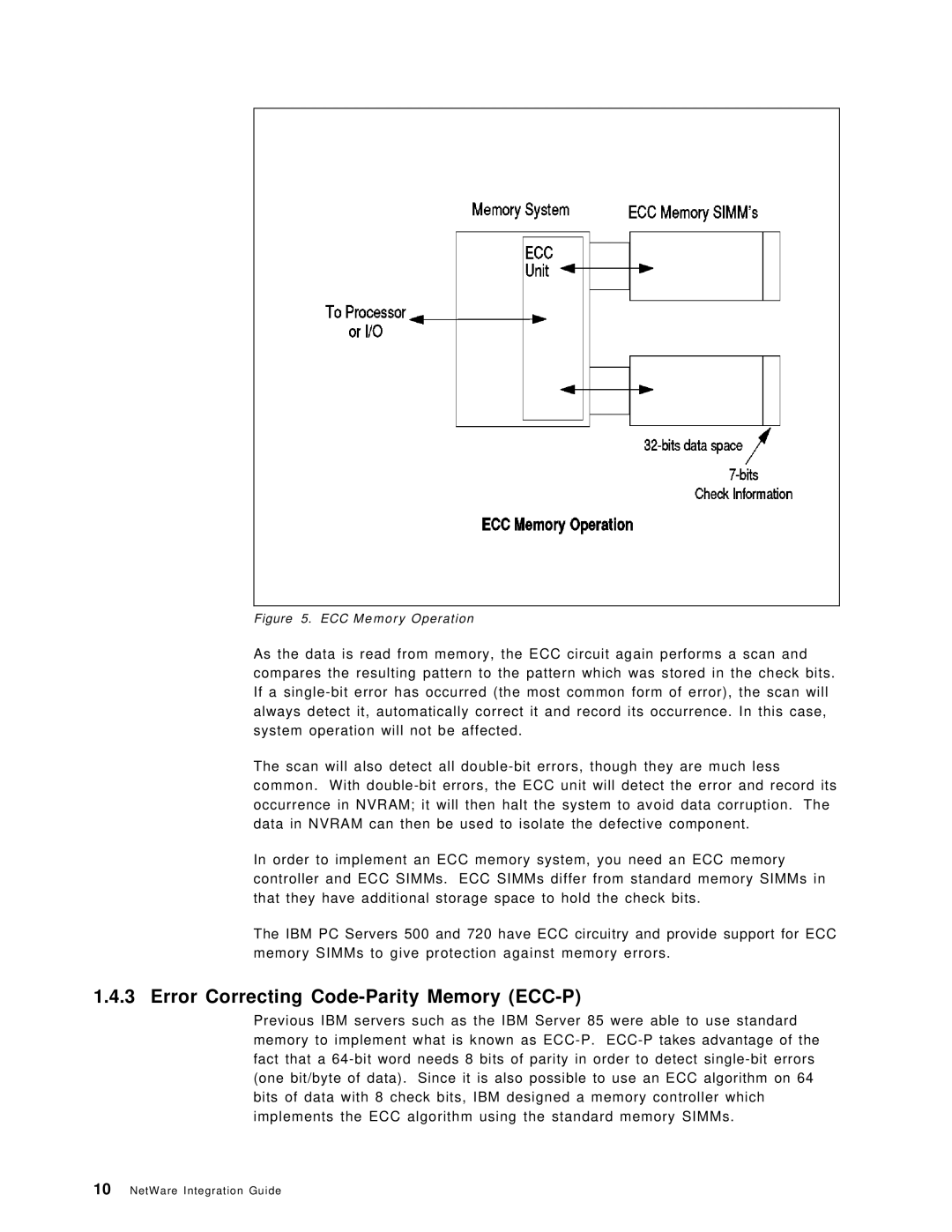
Figure 5. ECC Memory Operation
As the data is read from memory, the ECC circuit again performs a scan and compares the resulting pattern to the pattern which was stored in the check bits. If a
The scan will also detect all
In order to implement an ECC memory system, you need an ECC memory controller and ECC SIMMs. ECC SIMMs differ from standard memory SIMMs in that they have additional storage space to hold the check bits.
The IBM PC Servers 500 and 720 have ECC circuitry and provide support for ECC memory SIMMs to give protection against memory errors.
1.4.3 Error Correcting Code-Parity Memory (ECC-P)
Previous IBM servers such as the IBM Server 85 were able to use standard memory to implement what is known as
10NetWare Integration Guide
